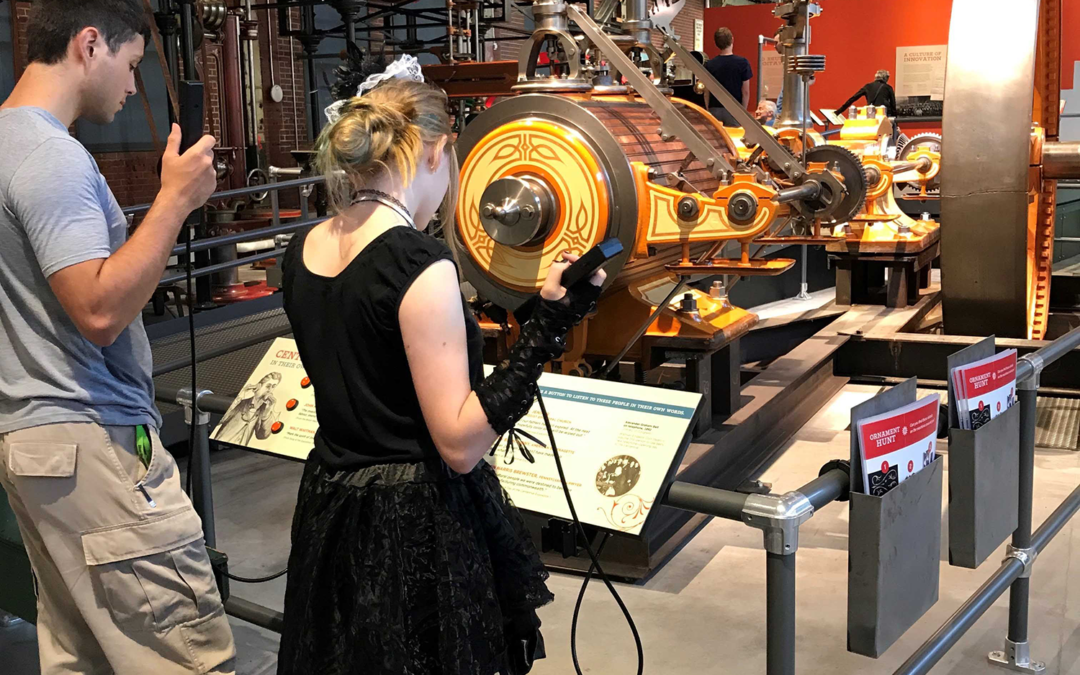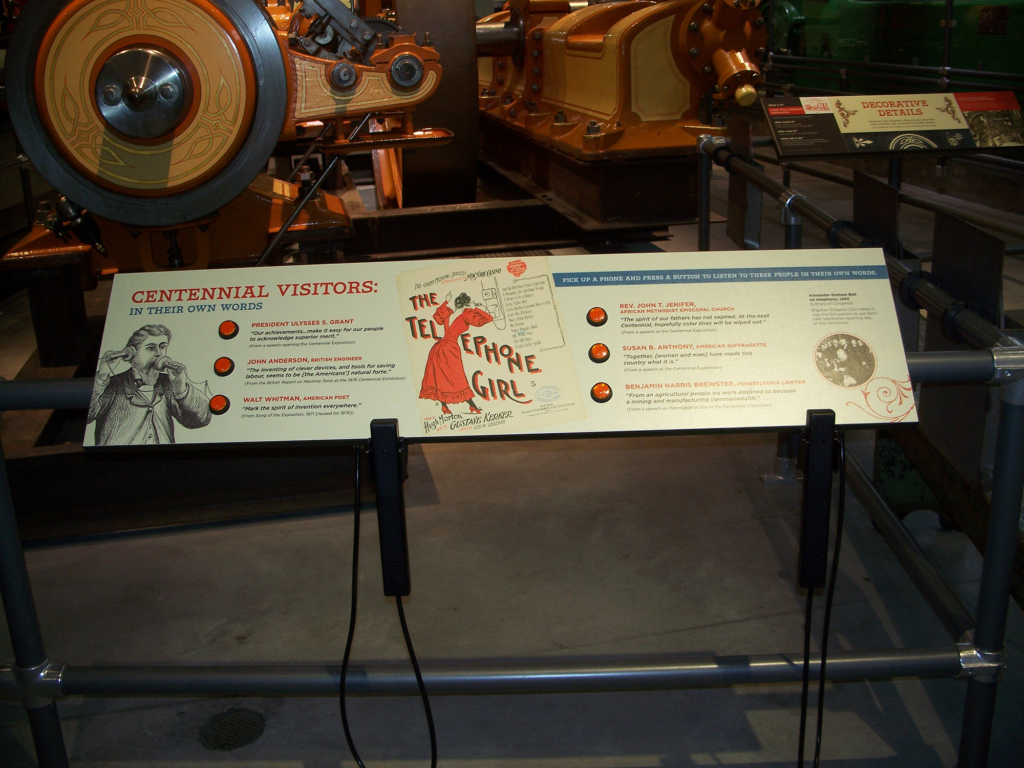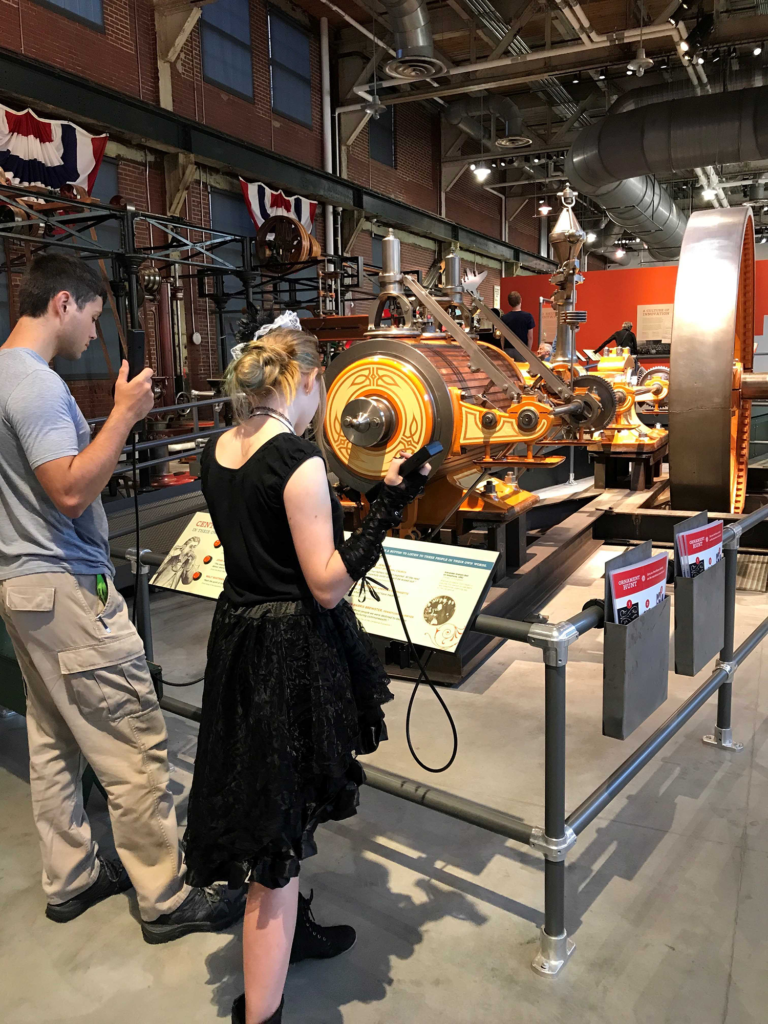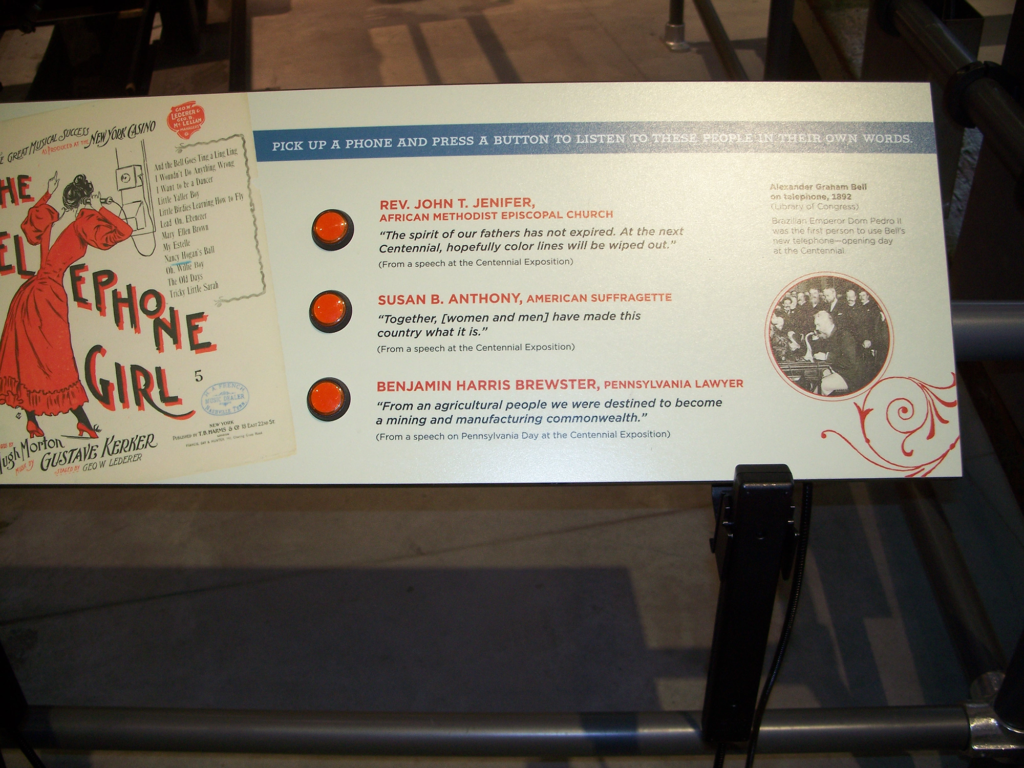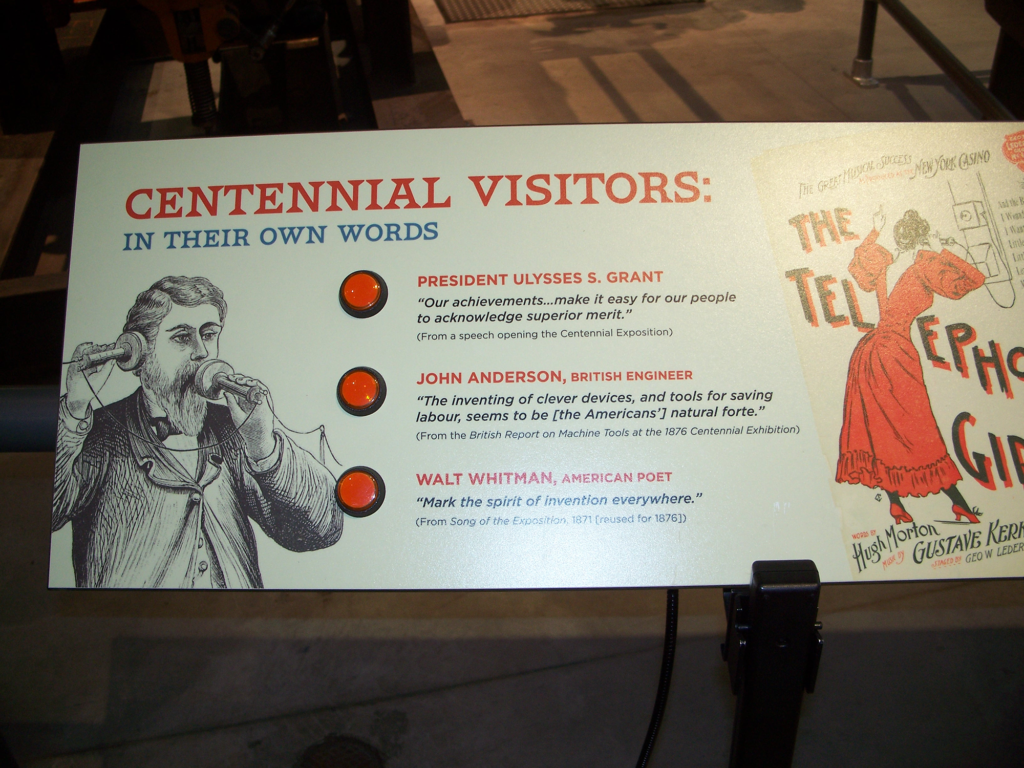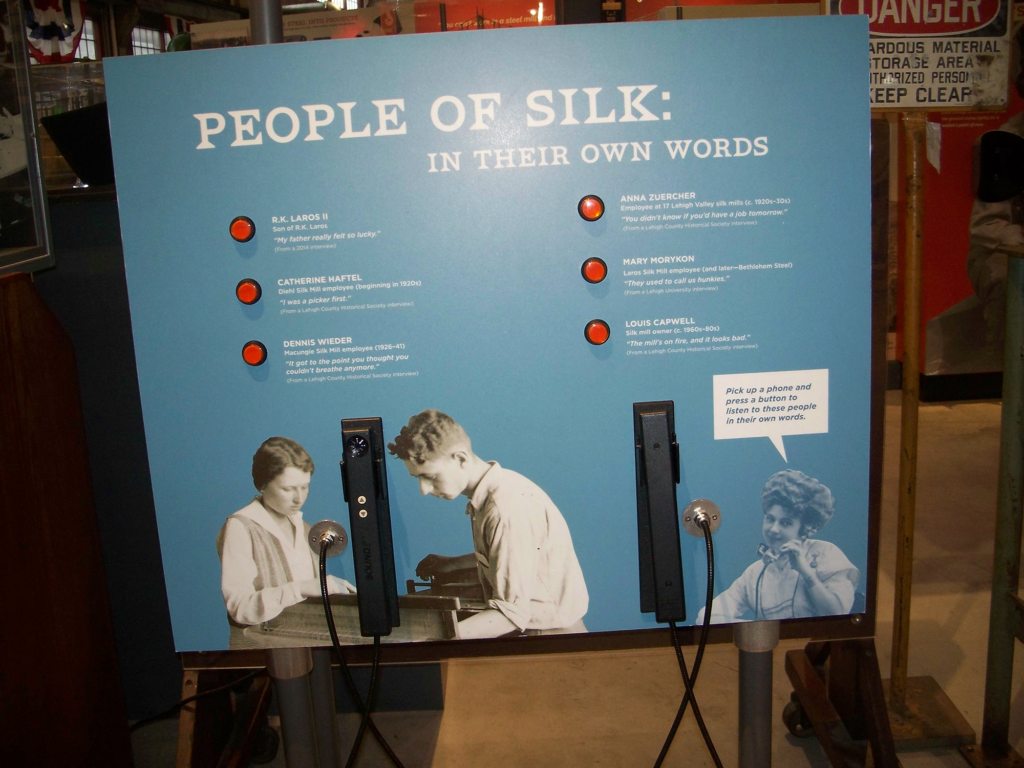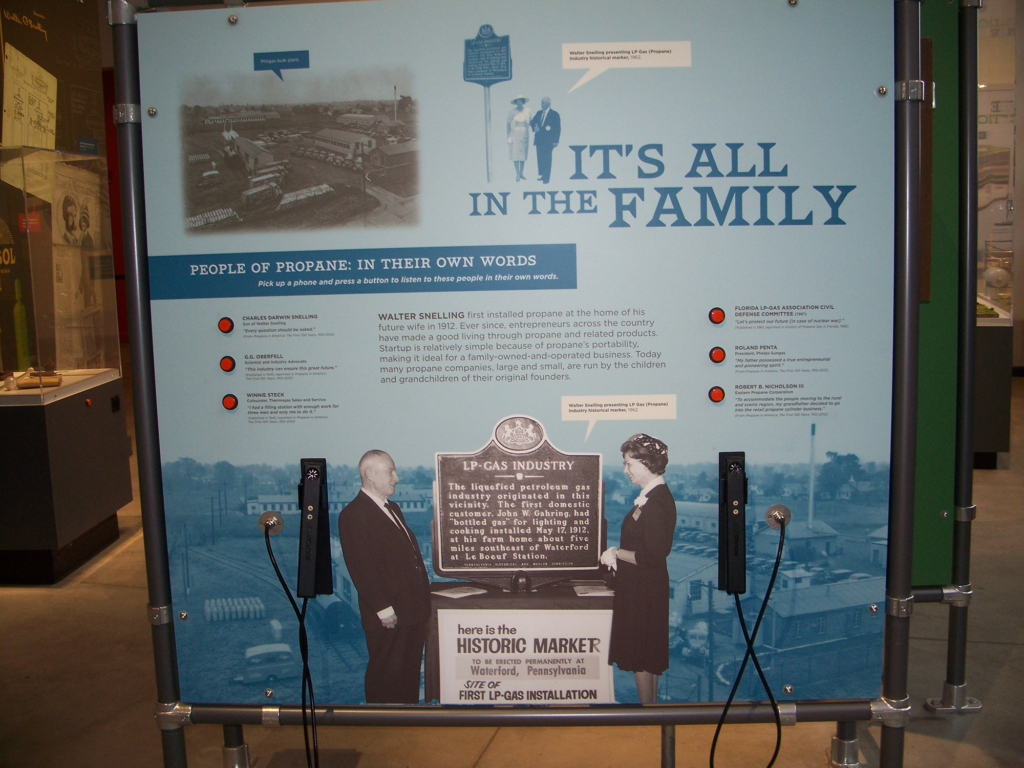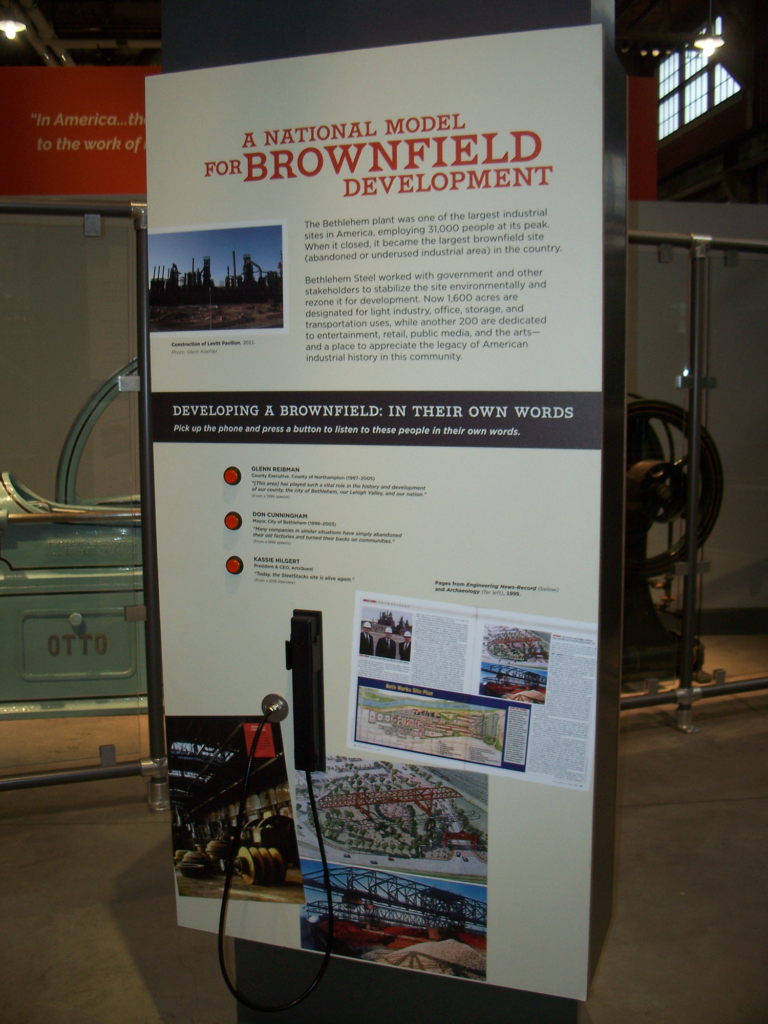Thwack! Don’t forget to punch in. The time clock starts your tour when you enter the National Museum of Industrial History in Bethlehem, Pennsylvania. Housed in a 1913 Bethlehem Steel machine shop, NMIH is a Smithsonian Affiliate. Their exhibits encourage visitors to engage with the past and get inspired by America’s manufacturing ingenuity.
Visitors laugh as they play with gears and attempt to generate horsepower by hand – a quick way to appreciate the might of machines. This authentic factory space is filled with colossal industrial equipment. Of course, it’s nowhere near as noisy as it would have been in the old days, but the occasional motion-detector triggers the clangs and hiss of a steam hammer.
Voices of past — and present – workers, innovators, and families are central to the National Museum of Industrial History’s programming and exhibits.
One challenge NMIH faced from the outset was how to tell stories and have them heard above visiting groups and other ambient noise in a big industrial space. For the last five years the answer has been Vista Group’s SoundStik handsets. The handsets offer personalized sound that is ADA compliant.
“Our SoundStiks are teamed with BrightSign systems and pushbuttons,” commented museum preparator Frank Sattler. “They hold up to lots of use and abuse. Sometimes we serve 1,500 school kids in a month!”
Creating compelling audio for NMIH has been a team effort. Talented museum staff helped record lively first-person accounts of people who worked in the silk mills. Local politicians told how they helped the Bethlehem community transform a heartbreaking former brownfield into the thriving arts hub of the SteelStacks. And a professional voice actor recreated Ulysses S. Grant’s speech at the 1876 Centennial Exposition opening. Grant helped start the huge Corliss steam engine that powered most of the exposition’s exhibits. A similar Corliss stands at NMIH, ready to roar to life on demonstration days.
In its smaller changing exhibition gallery, audio elements from one show can be seamlessly adapted into the next. In a past exhibit about radio, a series of lift-the-flap elements treated visitors to loudspeaker music from different eras. Today, these same audio components add the impact of sound to a new graphic panel in the Robert Fulton Industrious Revolutionary exhibit (through August 13, 2023). Now visitors can push a button to hear witnesses describe their personal experiences at the launch of Fulton’s famous Claremont steamboat in 1807.
Construction is underway on an exciting second floor of exhibits and educational spaces, expected to open in 2024. The museum’s original design team, Metcalfe Architecture and Design and ArtGuild, are back to ensure historic factory feel and dynamic exhibits. The new second level will offer expanded exploration of Lehigh Valley’s famous silk and textile industries.
“We hope to get our historic jacquard loom operating, making ribbon with programmable patterns,” explained Sattler. “We’re working with experts at Bally Ribbon Mills.”
It’s a fitting collaboration. In the 1800s, the mechanism and products of a jacquard loom were cutting edge, and today, the newest generation of looms at Bally weave textiles for aerospace. This next stage of NMIH is sure to wow and inspire future generations.
COMING SOON AT NMIH: Check out the events calendar for everything from an opportunity to operate a 1941 Whitcomb diesel-electric locomotive to a presentation on how the Bethlehem plant helped build New York City’s Lincoln Tunnel. For families, don’t miss the S.T.E.A.M. into Spring Break Youth Series from April 6 – 14. You might even catch that Corliss engine in action.

